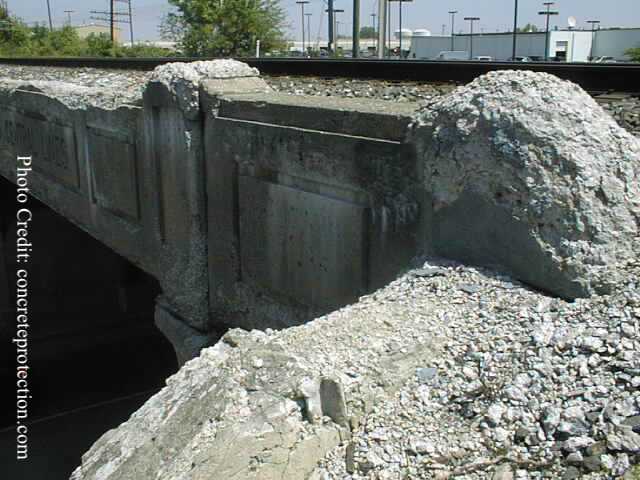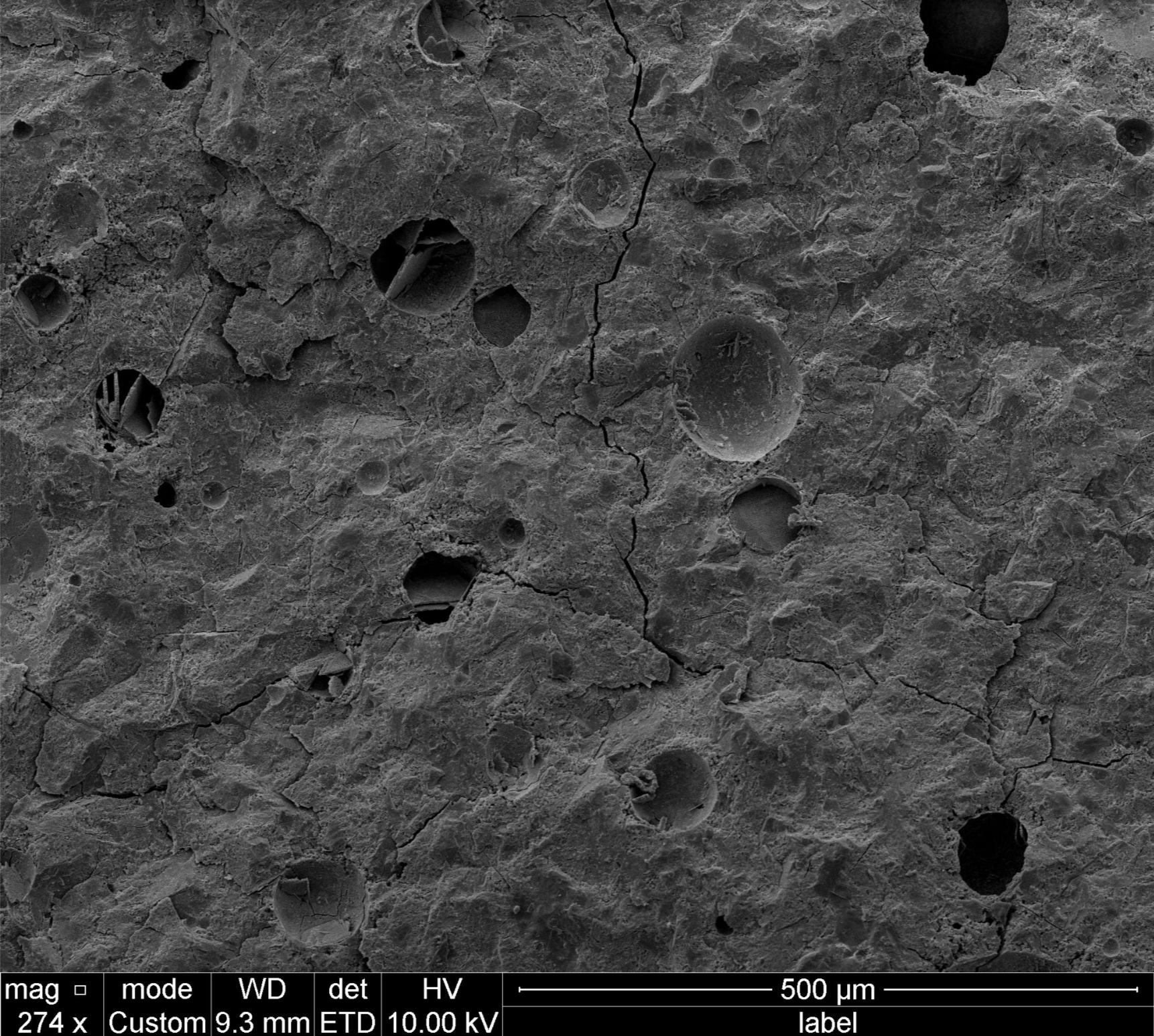Research
Introduction to Frost Durability
Freeze-thaw damage is one of the ways in which concrete can deteriorate. When concrete is exposed to freezing temperatures, water in the pores will freeze, resulting in hydraulic pressure from displaced water and crystallization pressure that generates localized tensile stresses that exceed the strength of concrete. This causes microcracks throughout the concrete that can compromise its structural integrity, as in Figure 1.
To accommodate for the volume expansion of the water as it freezes, air-entraining agents (surfactants) are used to introduce air voids into the mix, as shown in the micrograph in Figure 2. These voids are distributed throughout the body and connected by a network of pores so that when the water in the pores freezes, the displaced water can flow into a nearby air void, reducing hydraulic pressure. Once in the air void, the water can freeze with less volume restriction. As the crystal grows, it consumes water from the surrounding pores to sustain its growth, generating suction resulting in compressive forces that offset the crystallization pressure.
Motivation
Although we know that the air void system is critical for protecting concrete against frost damage, little work has been done to understand the mechanism of air entrainment and the role of the shell that forms around the air void. We aim to contribute to this fundamental understanding so that we can better control the air void system and improve the durability of concrete against frost damage.

Figure 1. Freeze-thaw damage of concrete

Figure 2. Micrograph of air void system in cement mortar